The birth of the Dukeries and Bess of Hardwick.
Above: Detail from Chapman's 1774 map of Nottinghamshire showing the layout of the Dukeries estates.
The Dukeries is the name given in the 19th Century to an area in the north of Nottinghamshire covering approximately fifty square miles, and which contained no less than four ducal seats in close proximity: Clumber House, seat of the Dukes of Newcastle, Thoresby Hall, seat of the Dukes of Kingston, (subsequently the Earls Manvers), Welbeck Abbey, seat of the Dukes of Portland, and Worksop Manor, seat of the Dukes of Norfolk. From the mid-16th to the mid-20th century these estates were owned by some of the most prominent, influential families in England. A fifth large country house, Rufford Abbey, was not a ducal seat but was closely associated with the above.
The reason this unusually large number of ducal families resided so close and in apparent harmony is due to a shared heritage. It started when Elizabeth Hardwick (Bess of Hardwick) married Sir William Cavendish. Being a court official during Henry 8th’s dissolution of the monasteries, William Cavendish was able to pick and choose the best areas of land and buildings for himself. It was probably Bess who persuaded William to then sell his properties in the south and purchase the Chatsworth estates in Derbyshire (her home county). Bess’ passion for building and forming estates had begun.
Their first child, Frances Cavendish, would marry Sir Henry Pierrepont, MP. Their son, Robert Pierrepont, would become the 1st Earl of Kingston-Upon-Hull, and purchase Thoresby from William Lodge, an Alderman of London. It would be Robert’s second son, William, who became the 4th Earl of Kingston and merged the lands he owned in Perlethorpe and Thoresby to form Thoresby Park.
Bess and William’s 5th child, Charles Cavendish, married Baroness Catherine Ogle. Their family home became Welbeck Abbey, eventually the ducal seat of the Duke of Portland, and their son, William Cavendish, would become 1st Duke of Newcastle-upon-Tyne, the title associated with the ducal seat of Clumber House.
Lastly, Bess and William’s 7th child, Mary Cavendish, became the wife of Gilbert Talbot, 7th Earl of Shrewsbury, giving birth to Alethea (a.k.a. Althea). Alethea Talbot would marry Thomas Howard, 1st Earl of Norfolk, the title associated with the ducal seat of Worksop Manor.
By the time of her fourth and final marriage to George Talbot, 6th Earl of Shrewsbury, Bess was already one of the richest and most influential women in England. Talbot was one of the premier aristocrats of the realm, and Lord of the Manor of Worksop. He had seven children by his first marriage, two of whom would marry two of Bess’s in a double ceremony: Mary Cavendish, aged 12, married Shrewsbury's eldest son Gilbert, aged 16, while Henry Cavendish, aged 18, married Shrewsbury's daughter Lady Grace Talbot, aged 8.
So it was that Elizabeth Hardwick’s (Bess of Hardwick’s) descendants inherited, purchased or gained by marriage Worksop Manor, Welbeck Abbey, Rufford Abbey, Clumber and Thoresby, lands which because of their interlinking relationships and close proximity would become known as the Dukeries.
For more information about the beginnings of Thoresby Estate, and Sir Robert Pierrepont 1st Earl of Kingston upon Hull, click on THIS LINK. You can read more about Worksop, the Dukeries, on THIS LINK, and an extensively update post about Welbeck, the Dukeries, on THIS LINK, and Clumber Park the Dukeries, on THIS LINK. For nearby Rufford see THIS LINK.
Labels: Bess of Hardwick, Cavendish, Clumber, Elizabeth Hardwick, history, Pierrepont, Rufford, the Dukeries, Thoresby, Welbeck, Worksop

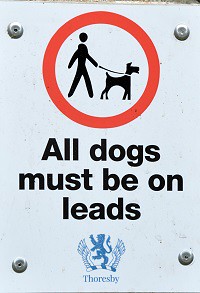 Thoresby Hall Hotel, Sherwood Forest and Clumber Park are recommended attractions for a day trip or short vacation. The
Dukeries area is of keen historic interest. NOTE: Apart from public domain postcards and brochures ALL photographs herein are copyright Ian Gordon Craig, exclusive permission granted to Thoresby Estate for their use elsewhere.
Thoresby Hall Hotel, Sherwood Forest and Clumber Park are recommended attractions for a day trip or short vacation. The
Dukeries area is of keen historic interest. NOTE: Apart from public domain postcards and brochures ALL photographs herein are copyright Ian Gordon Craig, exclusive permission granted to Thoresby Estate for their use elsewhere.
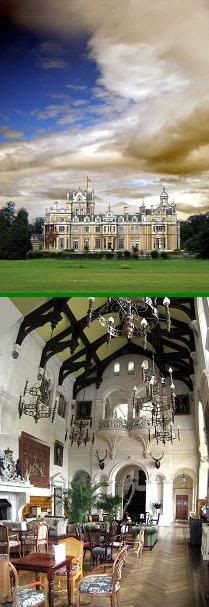 Thoresby Hall as photographed Summer 2009, now a successful Warners Hotel.
Thoresby Hall as photographed Summer 2009, now a successful Warners Hotel.
 Robert Pierrepont (1584 - 1643), 1st Earl of Kingston upon Hull, bought Thoresby for his second son William.
Robert Pierrepont (1584 - 1643), 1st Earl of Kingston upon Hull, bought Thoresby for his second son William.
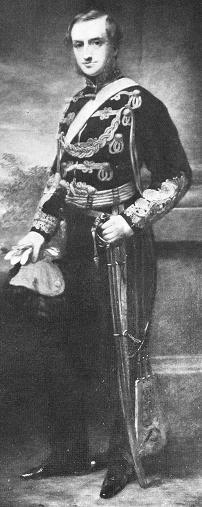 Sydney William Herbert Pierrepont (1825 - 1900), 3rd Earl Manvers, built the present Thoresby Hall, St John's Church,
Perlethorpe School, and generally shaped Thoresby Estate as it looks today.
Sydney William Herbert Pierrepont (1825 - 1900), 3rd Earl Manvers, built the present Thoresby Hall, St John's Church,
Perlethorpe School, and generally shaped Thoresby Estate as it looks today.
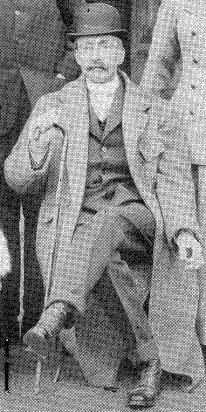 The 4th Earl Manvers (Died 1926).
The 4th Earl Manvers (Died 1926).
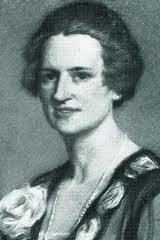 Countess Manvers (d.1984). Examples of her paintings are always on show at Thoresby Gallery.
Countess Manvers (d.1984). Examples of her paintings are always on show at Thoresby Gallery.
 ABOVE: The statue of Robin Hood in the courtyard at Thoresby Hall, by Tussaud - Birt, is showing its age, but remains one of
my favourites. The Art Gallery, crafts shops, and restaurant within that courtyard are recommended.
ABOVE: The statue of Robin Hood in the courtyard at Thoresby Hall, by Tussaud - Birt, is showing its age, but remains one of
my favourites. The Art Gallery, crafts shops, and restaurant within that courtyard are recommended.

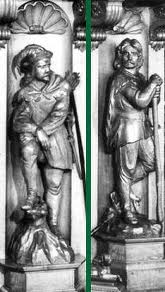
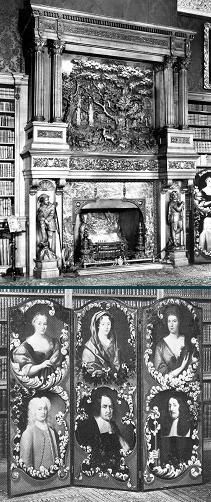 Carved oak fireplace in the Thoresby Hall library with its depiction of the Major Oak (Robin Hood's Tree), and the screen
featuring the Cromwell family. Oliver Cromwell is known to have stayed in Thoresby Hall before the English Civil War.
Carved oak fireplace in the Thoresby Hall library with its depiction of the Major Oak (Robin Hood's Tree), and the screen
featuring the Cromwell family. Oliver Cromwell is known to have stayed in Thoresby Hall before the English Civil War.
 The Green Bridge sited near the edge of the cricket pavilion in front of Thoresby Hall across which the Duke's carriage would take him to Perlethorpe Village.
The Green Bridge sited near the edge of the cricket pavilion in front of Thoresby Hall across which the Duke's carriage would take him to Perlethorpe Village.
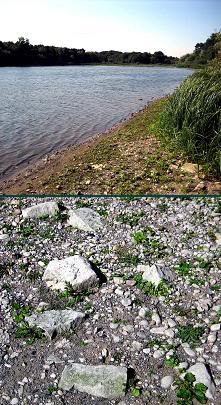 The view along Thoresby Lake towards Budby. Are these bricks at the water's edge remnants from the original Thoresby
Hall?
The view along Thoresby Lake towards Budby. Are these bricks at the water's edge remnants from the original Thoresby
Hall?
 The River Meden winds its way from 7 Ton Bridge near Thoresby Hall towards Perlethorpe Village.
The River Meden winds its way from 7 Ton Bridge near Thoresby Hall towards Perlethorpe Village.
 Budby Castle, once known as William Castle, and the River Meden winding towards Thoresby Lake under the remains of
Pierrepont Bridge, once described as classical and elegant.
Budby Castle, once known as William Castle, and the River Meden winding towards Thoresby Lake under the remains of
Pierrepont Bridge, once described as classical and elegant.
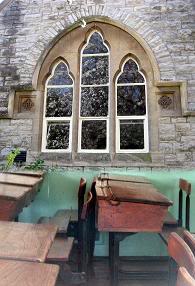
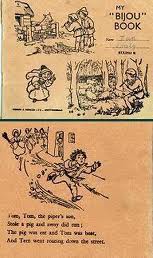 Children's exercise book from the school, 1958.
Children's exercise book from the school, 1958.
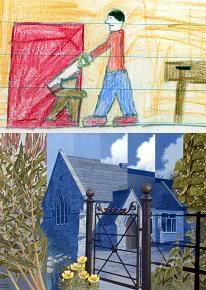
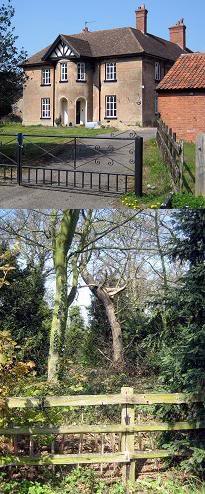



 Perlethorpe Church graveyard, where the original chapel once stood. The covered gate was a later addition in memorium to
the men of Budby and Thoresby who fell in World War 1.
Perlethorpe Church graveyard, where the original chapel once stood. The covered gate was a later addition in memorium to
the men of Budby and Thoresby who fell in World War 1.
 Robin Hood's Tree, the Major Oak, was once under the care and supervision of Thoresby Estate. Responsibility for its
upkeep changed to Nottingham City Council c.1969. Here it is pictured in in Spring, Autumn, and Winter.
Robin Hood's Tree, the Major Oak, was once under the care and supervision of Thoresby Estate. Responsibility for its
upkeep changed to Nottingham City Council c.1969. Here it is pictured in in Spring, Autumn, and Winter.
